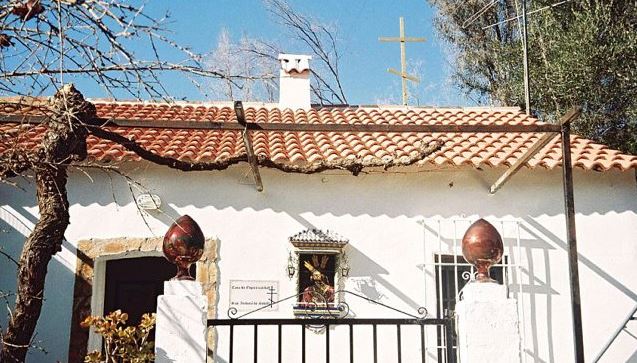
by Tudor Petcu
A Romanian writer, Tudor is a graduate of the Faculty of Philosophy, University of Bucharest, Romania. He has published a number of articles related to philosophy and theology in different cultural and academic journals. His work focuses on the evolution of Orthodox spirituality in Western societies as well and he is going to publish a book of interviews with Westerners converted to Orthodoxy. In this article, he interviews Francisco Jose Pino Rodriguez about a very interesting project, called Casa de Espiritualidad San Isidoro de Sevilla, for the rebirth of Orthodoxy in Spain.
1.) Please tell us when the Casa de Espiritualidad San Isidoro de Sevilla was founded and what its purpose is.
The Casa de Espiritualidad is a small house situated in El Castillo de las Guardas, some 60 km. north of Seville (Andalusia), in the middle of a beautiful natural landscape, which was bought in the year 2012 by Archmandrite Pablo, our Parish priest in Seville. The original purpose was to transform it into a small hermitage where one or two hermits could live a life of prayer and service to the wider Community. However, since we still do not have a suitable candidate, our Parishes in Southern Spain have been using it as a centre for retreats, informal meetings, etc. The house is cozy and very humble, with two rooms, a patio, a small library and a chapel (consecrated by our Metropolitan last June).
2.) Which is, or could be, the main contribution of Casa de Espiritualidad San Isidoro de Sevilla to the rebirth of Orthodoxy in Spain? I would be very happy if you could say some words about the further projects of the Casa de Espiritualidad as well.
In February 2016 I was appointed responsible for the House, and since then I am trying to transform it into a focal point for the study and spread of the Christian Orthodox faith and the Hispanic spiritual heritage. As I told you before, most of the Orthodox Parishes in Spain seldom use our language, so one of the aims of the House is to contribute to revert this tendency by celebrating services (especially the canonical Hours) in Spanish and providing our clergy and lay members with suitable liturgical material in order to do so. We will also have conferences about the lives of Hispanic Saints, etc. The most immediate project that we have is the celebration, next Autumn, of a basic Byzantine chant workshop dedicated to the eight Resurrection Troparia in Spanish.
3.) Why should Isidore of Seville be considered a Saint of the Orthodox Church, and what would be his importance for the wider Orthodox world?
In fact, Isidore, Archbishop of Seville from 599 to 636, is already commemorated as a Saint in Orthodox calendars (his feast is celebrated on the 4th of April). He can be considered one of the greatest luminaries of the ancient Hispanic Church. He fought against the Arian heresy, which was professed by the ruling Visigothic class in Spain, defended the Orthodox faith against the Jews and gathered all the scientific knowledge of his time in a book called the ‘Etymologiae‘. Definitely, Orthodox Christians of Hispanic origin have a very poweful intercessor in Heaven!


Is this church still open?